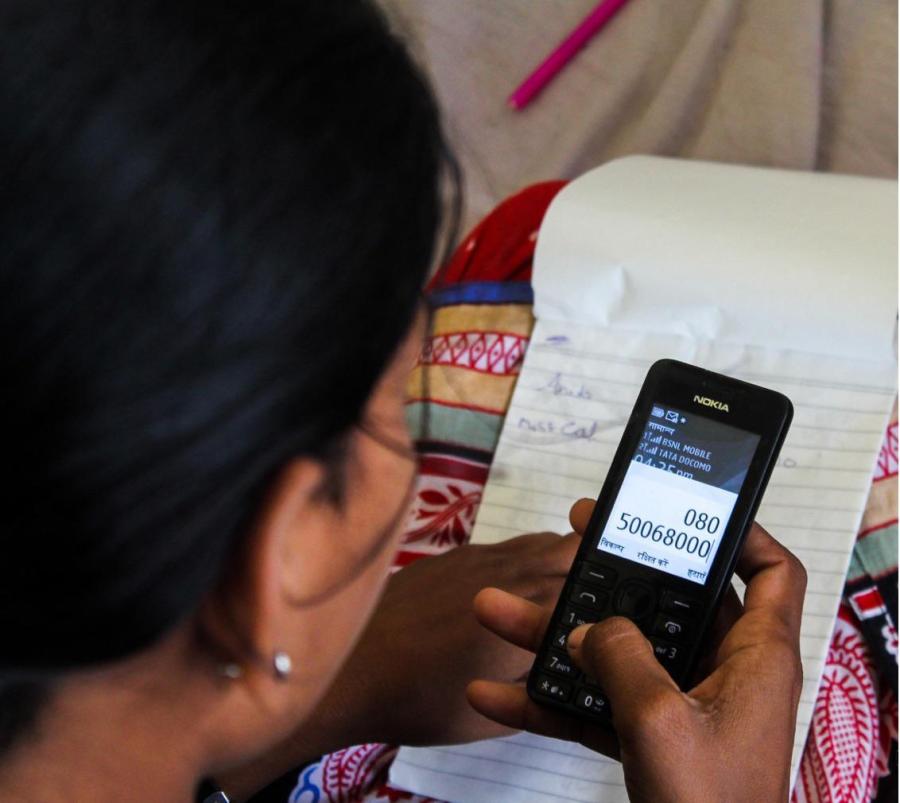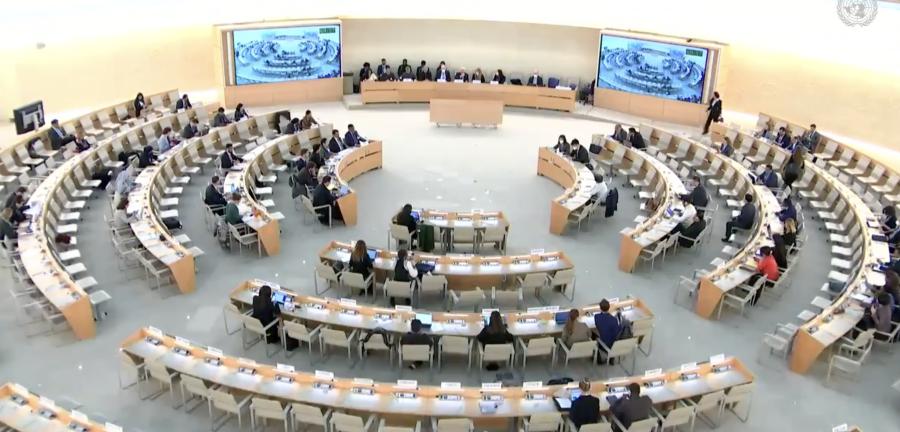People should develop along the lines of their genius and should avoid imposing anything on them. We should try to encourage in every way their own traditional arts and culture...We should try to train and build up a team of their own people to do the work of administration and development. Some technical personnel from outside will no doubt be needed, especially in the beginning. But we should avoid introducing too many outsiders into tribal territory...We should judge results, not by statistics or the amount of money spent, but by the quality of human character that is evolved.
Jawaharlal Nehru, 1958
The aboriginal tribes of India are the oldest inhabitants of the country. For millennia, tribal societies have been subjugated by more recently arrived groups; their land was taken away, they were pushed further into the hilly gorges and wilds, and they were forced to work for their oppressors often without payment. Today tribal groups, which number more than 40 million, require special attention from the government even though they live largely isolated from the national culture.
In the past, many tribal groups were forced to assimilate into the dominant culture of the country. But some groups, such as the Bhils, Gonds, Santals, Oraons, Mundas, Khonds, Mizos, Nagas, and Khasis resisted change and assimilation to maintain their cultural identities and languages. According to many Indians, their continued isolation poses problems to national integration. Under the banner of national unity, the government is now bringing these minority groups into the national mainstream. The main question is whether tribal societies can enter the national mainstream while preserving their distinct social, cultural and political beliefs.
Tribal Education System
Government planners see education as indispensable for helping tribal peoples cope with national integration. Education will also determine their prosperity, success and security in life. The tribes which remain either deprived of or negligent toward education will suffer the consequence.
Compared with the literacy rates of 29.34% for the general population, literacy among tribal peoples in India is at most 6%. The Union and the state governments have spent considerable sums of money for tribal youths' education, but the results are meager. The Commissioner for Scheduled Castes and Scheduled Tribes asserts that unless exploitation among the tribels is combatted and eliminated through education, no improvement in tribal welfare will occur. Within tribal areas, education can be the basis for integrated development.
Government reports indicate that there is no scarcity of schools, other facilities or scholarships for the implementation of tribal education schemes. Most tribal youth find these incentives unattractive, however. Consequently, the government's dream to assimilate the tribes remains unfulfilled and raises basic questions about the implementation of such policies and strategies.
The Relation between Tribal Students and Teachers
Among the various important factors of tribal education that influence integration into the national mainstream of life are the students and their teachers. Tribal students have different backgrounds from their non-tribal schoolmates and even the teachers, who are normally outsiders, do not understand the tribal students. To the teachers, tribal students appear untidy, reinforcing their biases against tribals. These biases are expressed in various forms of discrimination. Tribal youths have complained that teachers did not teach them in the schools because they believed that if they did, the tribal students would no longer be dependent on them. Tribal youths also feel that teachers endeavor to undermine the attitudes toward their own customs, mannerisms, language, or, toward their cultural heritage in general.
During my own student career, I had many experiences which made me feel that I belonged to a primitive, uncultured group whose youth were not worthy of being students. I can still recollect many such incidents vividly from my school and college days. One such incident occurred when I was studying in Nagpur for a graduate degree. An essay entitled "How Many Cultures?" had been prescribed in second year general English in the B.A. course. The author referred to the tribes and their cultures and mentioned the Bhils in passing. One of the students in the class asked the lecturer who the Bhils were. The lecturer showed contempt and said, "a kind of jungly people." The students had a good laugh. One of the students in the class, who knew that I belonged to that tribe, turned and pointed toward me, saying, "One of them is here." They all laughed louder.
On another occasion, while I was working toward an M.A. in sociology at Indore University, a professor made a reference to the Bhuiya tribe in Orissa during his lecture. One of the girls sitting close to me said insultingly, "One of them is sitting here." I walked out of the lecture hall and for the next fifteen days I did not appear on the college campus. My tribal classmates shared similar experiences with me.
Later, when I began to pursue anthropological research on the tribal cultures, I found that many tribal cultures had positive elements which were absent in mainstream "national" culture. I became aware of tribal groups' proud heritage and started to impart this knowledge to tribal youth in schools and colleges. I accepted myself as a Bhil, spoke Bhili in public places and testified on the radio, in newspapers and at public meetings that I belonged to the Bhil tribe. This helped me come to terms with the inferiority complex the non-tribal teachers and other so-called superior persons such as government officials had implanted in me.
Today, I am free of feelings of cultural inferiority because I have analyzed the whole situation and put it in the proper perspective. When I, as an educated Bhil, accepted myself as a tribal person, other tribal individuals began to realize that non-tribal people were continuing to oppress them in various ways.
Tribal Festivals, Freedom and Youth vs. Education
The educational schedule - the school year, daily classes and holidays - is organized with little understanding of tribal cultures. Tribal festivals and celebrations and the seasonal pursuit of agriculture and gathering are not taken into consideration in planning educational timetables. All too often teachers hold classes as they would in cities or towns, ignoring the daily or seasonal habits of tribal pupils.
Educational Institutions
The schools and their surroundings shape the minds of the children who frequent them. Most tribal schools do not blend well into the tribal environment. They are alien and often ugly structures in tribal villages. Shortly after schools are opened, they acquire the look of neglected and dilapidated buildings. Even after tribal youths' educations are completed and they find employment, negative attitudes fostered in the classroom remain a real social hurdle. They do not belong in their tribal culture, nor in the national culture.
The Medium of Instruction
Some tribes still speak their language. While adult males are often bilingual, the women and children speak tribal dialects almost exclusively. Yet, a tribal child, on entering school, is suddenly expected to understand the state language. Children cannot understand the teacher, let alone answer questions. Many teachers assume that tribal students are slow; even if the teachers are sympathetic, overcoming this language barrier requires a great deal of effort. It would help considerably if tribal pupils were taught, during their first years in school, in their tribal language. They could then be gradually encouraged to learn the regional language.
The Constitution of India, under Article 350A, affirms that every state must provide adequate facilities for instruction of pupils in their mother tongues. Decades have passed and state governments have ignored this prescription for tribal people. Since initial instruction to the tribals is given in a foreign language, they understand and assimilate very little. Consequently, their response to education is poor. Had the instruction at the primary stage been in their own tongue, the progress of tribal students would have been better, and today there would be awareness of the importance of literacy among the tribal populations. Some attempts are being made to educate Gonds, Bhils, Santals, and other groups in their own tongues. According to recent reports, tribal children are responding well to such programs.
Content and Method of Tribal Education
The content and the method of tribal education must be objectively evaluated. Tribal youth have unique historical and social backgrounds but need special attention and orientation in their attempts to bridge two cultures. Many school and college curricula which tribal youths encounter are either irrelevant to them and/or offer only negative views of tribal societies. While national and state governments, in theory, offer many benefits, concessions and facilities to tribal students, few of them reach the intended recipients.
Integration of Tribal Youth in Their Own Culture
Tribal youth, even while they Study at the secondary and college levels, should, be encouraged not to jettison their own cultures and to remain integrated in their own societies. Once they become culturally and socially alienated, it is impossible for them to protect and lead their own societies and maintain traditions that may be essential to the viability of tribal cultures. Furthermore, tribal leaders often begin to imitate non-tribal peoples' exploitive tactics, even looking down on their own people. In some cases they treat tribal populations worse than non-tribal populations. Development in tribal societies should focus on educational programs that encourage keeping tribal youth genuinely integrated in their own culture.
Education of Tribal Leaders
Tribal leadership has been subverted by outside influences and agencies such as the police, the courts and political parties. In the case of political parties, tribal leaders are often manipulated for the block of votes they can deliver rather than encouraged to take the initiative of leading their people to find locally derived solutions to local problems. As a result, village autonomy was destroyed, law and order has deteriorated, and respect for authority was lost. Tribal leaders began to exploit their own people politically, socially and economically.
Tribal students, even while they are receiving their education, must be trained to be dedicated to the service of their own people. They must help to develop their people's inner resolve to resist exploitation and to safeguard their own rights.
Article copyright Cultural Survival, Inc.



